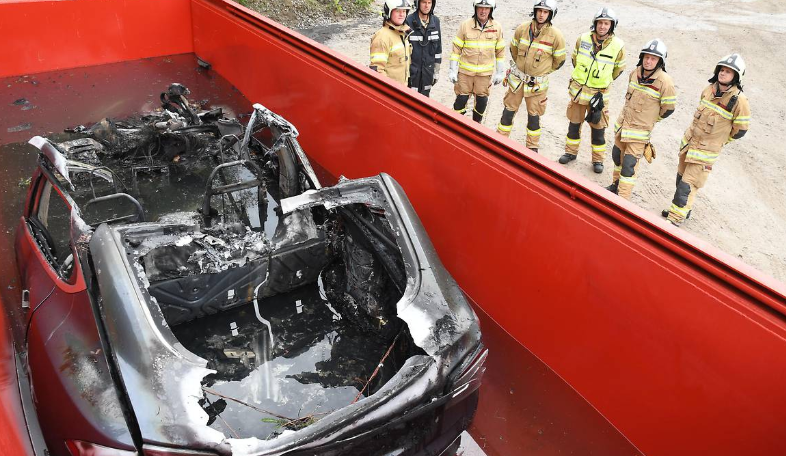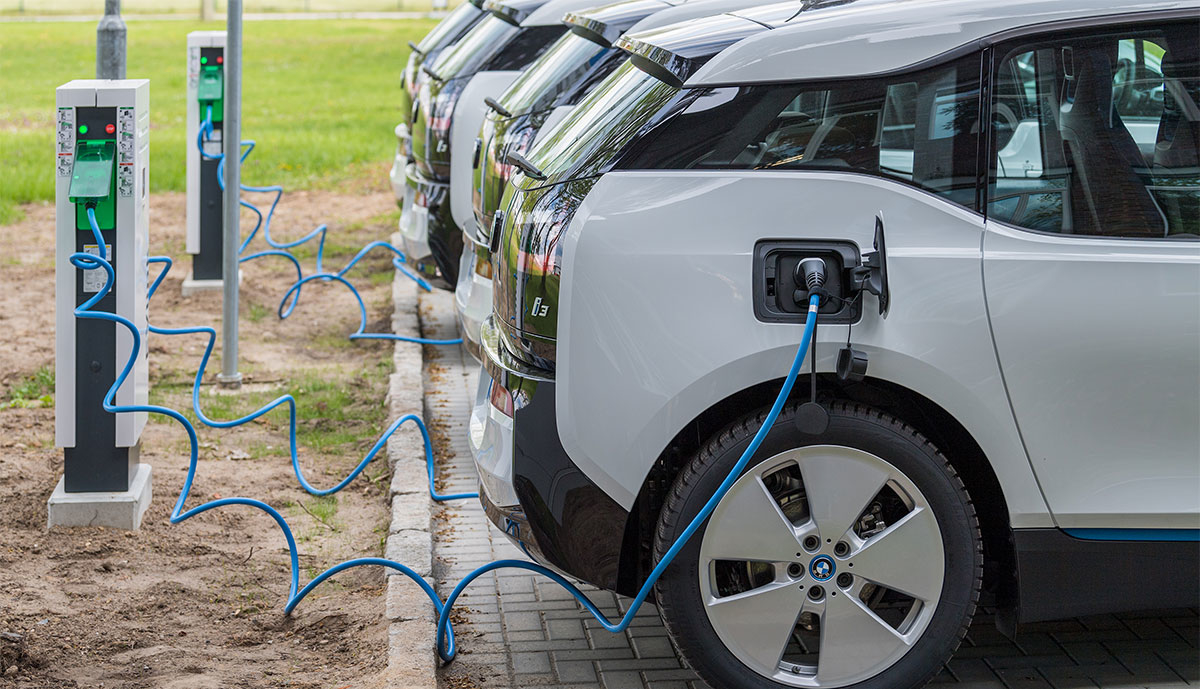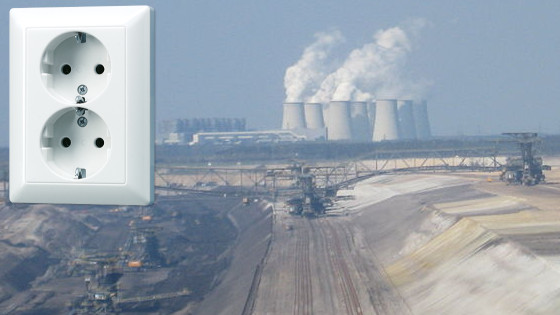Honored to be sharing my thoughts on sustainable aviation at ASTM, the Association of Swiss Travel Management (the Swiss successors of ACTE.org), at their Earth ’21 sustainability conference (their first, definitely not the last), the main question, not just in the Q&A but also in the following discussions and messages was the issue to understand the difference between BioFuels, SynFuels and Sustainable Aviation Fuels (SAF).

There is a lot of greenwashing and intentional abuse by using especially SAF for unsustainable fuels. So let me give you a short definition and help me and all others on the road to sustainable aviation to understand the greenwashing and using the proper wording for the proper thing!
Fuel Blending
At first, we started to blend biofuels into our car fuels. It is what you use in your car, blended as E5 (5%) or E10 (10%) into to fossil fuel. So it is lipstick on pigs, as in reality, it is still 90% or even 95% fossils! And may be very likely the reason, why fossils (and CO2) are still on the rise and growing.
 Anything not Zero-fossil such by definition is not “sustainable” in reality. At max it can be a step on the road to sustainability. Mostly an attempt for Greenwashing!
Anything not Zero-fossil such by definition is not “sustainable” in reality. At max it can be a step on the road to sustainability. Mostly an attempt for Greenwashing!
Biofuel
 So first we had biofuel. Which by definition is from a biological source, like rapeseed. With environmental activists for years complaining that valuable agricultural space (fields) are abused for biofuels instead of human food. And Amazon and other forests are being burned down to plant such seeds.
So first we had biofuel. Which by definition is from a biological source, like rapeseed. With environmental activists for years complaining that valuable agricultural space (fields) are abused for biofuels instead of human food. And Amazon and other forests are being burned down to plant such seeds.
Biofuels to date comes always blended, engines are not able to operate on unblended biofuels without major modifications! There was another greenwashed development, where Lufthansa in cooperation with DB Schenker operated a 100% Carbon-Neutral cargo flight, offsetting the CO2 from unsustainable fossil fuels. As was openly discussed at and reported from COP26, offsetting is #greenwashing. It’s not in itself “green” but a sale of indulgences.
While we also planned with Biofuel when we developed the Kolibri business and financial plans, we back then already understood that as the only option then available and such the maximum step we could do to fly somewhat sustainable. But then I learned about
SynFuel (my choice)
 Just about three years back, I stumbled across a report about Sunfire.de, developing something they called SynFuel. I still use that word, whereas SynFuel is also called e-Fuel or PowerFuel. I do not like those two “modern” terms. As e-Fuel implies (I believe intentionally) “electric” (e-Mobility), which has nothing to do with it. And PowerFuel implies a higher power efficiency which as as missleading. So I file those namings under attemps for white- and greenwashing.
Just about three years back, I stumbled across a report about Sunfire.de, developing something they called SynFuel. I still use that word, whereas SynFuel is also called e-Fuel or PowerFuel. I do not like those two “modern” terms. As e-Fuel implies (I believe intentionally) “electric” (e-Mobility), which has nothing to do with it. And PowerFuel implies a higher power efficiency which as as missleading. So I file those namings under attemps for white- and greenwashing.
SynFuel by definition is Synthetic Fuel, refined by CO2 and Hydrogen. The name is program. So I encourage use of SynFuel and not those other names that are rather distractive.
Speaking to Sunfire back then, I triggered their understanding that aviation is a key target market for their SynFuel, which they originally envisioned as a Diesel-replacement. So I speak about SynFuel for the generic addressing of fuels, SynKerosene and SynDiesel for specific replacements.
SynFuel has been proven to be able to operate unblended, at 100%, both for cars, trucks, ships or aircraft. It might be noteworthy that the Hamburg SynFuel pilot facility at Hamburg Airport is said to not have been just opposed, but in fact boycotted by Lufthansa there. For the fear to be pushed towards it’s use, which they are not ready for. Unwilling. A clear sign about their real “sustainability interest”, which is pure greenwashing!
 In my opinion, SynFuel is the main, in fact the only candidate to replace fossil kerosene in aviation. At this time, the production of SynFuel requires quite some energy; 15.3kWh/liter. Energy that taken from the grid, especially in Germany with the worldwide highest grid cost, will make it very expensive. But.
In my opinion, SynFuel is the main, in fact the only candidate to replace fossil kerosene in aviation. At this time, the production of SynFuel requires quite some energy; 15.3kWh/liter. Energy that taken from the grid, especially in Germany with the worldwide highest grid cost, will make it very expensive. But.
But if you develop green energy sources and use those to refine SynFuel, you have several advantages. The energy cost drops drastically. You replace grid-power, which is not green, no matter what you “buy”. The demand for green grid power by far exceeds the supply today. So that’s just more greenwashing! Only green SynFuel is sustainable and Grid-Energy is not sustainable either!
It’s rather new, which might explain conservative politicians and industry leaders still holding on to the less sustainable e-mobility. Or wishful thinking like liquid hydrogen flying, which will not have any impact by 2030, realistically a lot later than 2050! And a meek excuse by most of our industry leaders to delay investment into real sustainability.
Sustainable Aviation Fuels (SAF) – the Greenwashing Lie
 When IATA commits to 2% blending of SAF into fossil fuels by 2030, that “SAF” is used to pretend sustainability. In IATAs definition, that includes both BioFuels, as well as any-colored SynFuel. If they would be honest, their commitment would require to amount for 2% net sustainability. Which in itself remains an embarrassment! Even on cars we have already E5 in most countries as a standard, E10 an option. And aviation commits to E2?
When IATA commits to 2% blending of SAF into fossil fuels by 2030, that “SAF” is used to pretend sustainability. In IATAs definition, that includes both BioFuels, as well as any-colored SynFuel. If they would be honest, their commitment would require to amount for 2% net sustainability. Which in itself remains an embarrassment! Even on cars we have already E5 in most countries as a standard, E10 an option. And aviation commits to E2?
The only real SAF is 100% green SynFuel
meaning the source energy is green!
Even waste-to-liquid is not really SAF, as the waste often is not from sustainable sources. But experts agree so far that it is “circular” and helps to reduce the carbon-footprint. There it is more the waste-producing industry to replace i.e. fossil-based plastics with bio-degradable alternatives. Though I just had some lobbyist trying to convince me (seriously!) that plastic is good for climate…
Further Reading
I addressed this in The Road to Environmentally-Friendly Flying, which I work on to turn into a WhitePaper.
Where my WhitePapers are meant as articles I keep updating occasionally. Different from such posts, which reflect my knowledge, opinion and ideas at time of writing. They are also rather nice in review, seeing my head still being round, but my ideas mostly sound.
This all is
Food for Thought!
And as usual, comments, disagreement, discussion and ideas are welcome!


 Another issue that slowly reaches the public is the issue of batteries catching fire. First major reports were on the
Another issue that slowly reaches the public is the issue of batteries catching fire. First major reports were on the  Worse, recently despite their relative low numbers, electric cars are increasingly reported to catch fire. Some at first loading at a standard, approved home loading facility, others while driving. Different from gasoline, a thermal runaway and the resulting battery explosions cause a much higher real danger to the cars passengers. And it does not help to distinguish the fire, but such car must be placed into a water tank for several days to cool down the batteries. And after a fire, such cars usually are beyond any recycling. The picture just one example of the many that can be found on the Internet.
Worse, recently despite their relative low numbers, electric cars are increasingly reported to catch fire. Some at first loading at a standard, approved home loading facility, others while driving. Different from gasoline, a thermal runaway and the resulting battery explosions cause a much higher real danger to the cars passengers. And it does not help to distinguish the fire, but such car must be placed into a water tank for several days to cool down the batteries. And after a fire, such cars usually are beyond any recycling. The picture just one example of the many that can be found on the Internet. Incorrect disposal of Li-ion batteries can have a devastating environmental impact on the environment, sparking the need for recycling (
Incorrect disposal of Li-ion batteries can have a devastating environmental impact on the environment, sparking the need for recycling (
 German Automotive Club ADAC just recently reported the average range of electric cars being about 350 km (220 miles), up from 250 km (150 miles) five years ago. Thinking about my role as an airline sales manager some years ago, for a road trip, I traveled frequently more than 500 km a day. Then I shall load the car after a half day, sitting around while waiting? Keep in mind, that corporate fleets and rental cars are the main buyers of new cars! And they don’t buy them because they park them most of the time…?
German Automotive Club ADAC just recently reported the average range of electric cars being about 350 km (220 miles), up from 250 km (150 miles) five years ago. Thinking about my role as an airline sales manager some years ago, for a road trip, I traveled frequently more than 500 km a day. Then I shall load the car after a half day, sitting around while waiting? Keep in mind, that corporate fleets and rental cars are the main buyers of new cars! And they don’t buy them because they park them most of the time…? The new Volkswagen ID.4 uses 22.8 kWh per 100 km (Source
The new Volkswagen ID.4 uses 22.8 kWh per 100 km (Source  Like I found on the research for the
Like I found on the research for the  As I mentioned in my post about
As I mentioned in my post about  Ready Player One? I love SciFi. There’s a lot really good ideas how we could merge individual transportation needs with “public” transportation. But that’s SciFi. We need to take the best ideas and evolve our transportation to sustainable ways in the real world. We must reduce energy. Integrate transport modes. Why does it remind me of the question why the big train stations are not at the airports? The “new” Berlin Airport being a perfectly bad example on this!
Ready Player One? I love SciFi. There’s a lot really good ideas how we could merge individual transportation needs with “public” transportation. But that’s SciFi. We need to take the best ideas and evolve our transportation to sustainable ways in the real world. We must reduce energy. Integrate transport modes. Why does it remind me of the question why the big train stations are not at the airports? The “new” Berlin Airport being a perfectly bad example on this!
 At the Unconference of the
At the Unconference of the  So IPCC leaked that
So IPCC leaked that 
 Talk- the-Talk or Walk-the-Walk?
Talk- the-Talk or Walk-the-Walk? What about the cargo fleets on the oceans, rivers, in the air and on the road? If ESG doesn’t have a way to set targets and adjust to plans, what is it really good for? Are “data centers” and “digital” part of the solution? Or more part of the problem? Don’t get me wrong, there are good IT projects that will make impact. But most are just more
What about the cargo fleets on the oceans, rivers, in the air and on the road? If ESG doesn’t have a way to set targets and adjust to plans, what is it really good for? Are “data centers” and “digital” part of the solution? Or more part of the problem? Don’t get me wrong, there are good IT projects that will make impact. But most are just more 
 1971 (yes, 40 years ago and as a kid) I became a fan of Roger Leloup, spending my pocket money on comics. And when Hyperloop became a buzz, I couldn’t help it to remember Leloup’s Vinean transport system.
1971 (yes, 40 years ago and as a kid) I became a fan of Roger Leloup, spending my pocket money on comics. And when Hyperloop became a buzz, I couldn’t help it to remember Leloup’s Vinean transport system. And the buzz-topic A.I.? Aside the fact that all A.I. I learn of still is just I.A. – more or mostly less sophisticated
And the buzz-topic A.I.? Aside the fact that all A.I. I learn of still is just I.A. – more or mostly less sophisticated  To make a real change, you need a team of entrepreneurs thinking outside the box. Way outside the box. But with an experience on pioneering work, overcoming the
To make a real change, you need a team of entrepreneurs thinking outside the box. Way outside the box. But with an experience on pioneering work, overcoming the 
 First Webpage 1994 (thanks to Oliver Dietzel). First own domain (CheckIn.com) 1995. First commercial Internet travel bookings (ab)using Amadeus 1996 (Siemens Travel Net/Cytric). Honorary Member of the Editorial Board for ITB Travel Technology Congress 1999-2002. Exclusive speaker at the first ever ACTE event (a three-city roadshow) in Germany 2001.
First Webpage 1994 (thanks to Oliver Dietzel). First own domain (CheckIn.com) 1995. First commercial Internet travel bookings (ab)using Amadeus 1996 (Siemens Travel Net/Cytric). Honorary Member of the Editorial Board for ITB Travel Technology Congress 1999-2002. Exclusive speaker at the first ever ACTE event (a three-city roadshow) in Germany 2001.



 I also reached out to my now
I also reached out to my now  There is a
There is a 

 While we talk with impact investors, we do also understand the European Central and the European Investment Bank claiming to be “Sustainability Banks”. Talking with the very same investors being “naturally” and clearly interested in sustainable projects, we asked why they would not make use of those funds to complement an investment into Kolibri or other impact investments.
While we talk with impact investors, we do also understand the European Central and the European Investment Bank claiming to be “Sustainability Banks”. Talking with the very same investors being “naturally” and clearly interested in sustainable projects, we asked why they would not make use of those funds to complement an investment into Kolibri or other impact investments.
 At the same time, the plastics industry is booming. And instead of developing sustainable packaging, the trend is clearly towards mixed-use, the known bad example being “Tetra Pak®“; a packaging made of several layers that make it exceptionally
At the same time, the plastics industry is booming. And instead of developing sustainable packaging, the trend is clearly towards mixed-use, the known bad example being “Tetra Pak®“; a packaging made of several layers that make it exceptionally  Now, how about “my industry”, how about aviation? And why is it constantly the scapegoat and blamed for global warming?
Now, how about “my industry”, how about aviation? And why is it constantly the scapegoat and blamed for global warming? Speaking with one of those “challengers”, he argued that in 10 years the first regional aircraft will fly on fuel-cells. Being “project planning”, I’d say better add 50% reserve to that, then we talk about 15 years. And personally I still doubt that time line. And then we will have aircraft with 10, 20 or maybe 30 seats. With a range of one to two hours. When we will have aircraft that transports 100 seat? Or ones that can replace the 150-250 seats used by the low cost airlines? When do we expect aircraft to transport 250-350 passengers long haul? Hiding behind “Research”? Science Fiction…
Speaking with one of those “challengers”, he argued that in 10 years the first regional aircraft will fly on fuel-cells. Being “project planning”, I’d say better add 50% reserve to that, then we talk about 15 years. And personally I still doubt that time line. And then we will have aircraft with 10, 20 or maybe 30 seats. With a range of one to two hours. When we will have aircraft that transports 100 seat? Or ones that can replace the 150-250 seats used by the low cost airlines? When do we expect aircraft to transport 250-350 passengers long haul? Hiding behind “Research”? Science Fiction… Sustainable economy and global warming are big issues today, but most that we see is lip services. An investor group just recently checked impact investments for the “real” impact. They reported about 4% of all investments having a quantifiable impact or quantifiable targets. Only 4%. All others to be #greenwashing. On the “impact programs” of the 100 largest companies in Europe they found not a single one having more than one or two percent impact to global warming. Most of them being “lighthouse projects” that are being developed inside a “bubble” that does not immediately impact the company. Mostly lip-services addressing already established programs, but don’t really change the existing processes.
Sustainable economy and global warming are big issues today, but most that we see is lip services. An investor group just recently checked impact investments for the “real” impact. They reported about 4% of all investments having a quantifiable impact or quantifiable targets. Only 4%. All others to be #greenwashing. On the “impact programs” of the 100 largest companies in Europe they found not a single one having more than one or two percent impact to global warming. Most of them being “lighthouse projects” that are being developed inside a “bubble” that does not immediately impact the company. Mostly lip-services addressing already established programs, but don’t really change the existing processes.
 The very same issue is it about hydrogen powered passenger flights, Airbus recently promoted as their “Zero-Emission Aircraft”. Again, the physical challenge.
The very same issue is it about hydrogen powered passenger flights, Airbus recently promoted as their “Zero-Emission Aircraft”. Again, the physical challenge. Aside, synfuel can be used quite easily as a buffer technology, using excess power to create synfuel during peak times and using it in common and tried power generators to recreate energy in low times. Until we have something better, Syngas is a clean energy source that can make us independent of crude-oil for power generation. a technology that can create a future for many “poor countries” in the “tropical belt”, the tropic (red) and subtropical zones (yellow), as their surplus of solar energy is way higher than what the northern hemisphere has in the temperate to polar zones.
Aside, synfuel can be used quite easily as a buffer technology, using excess power to create synfuel during peak times and using it in common and tried power generators to recreate energy in low times. Until we have something better, Syngas is a clean energy source that can make us independent of crude-oil for power generation. a technology that can create a future for many “poor countries” in the “tropical belt”, the tropic (red) and subtropical zones (yellow), as their surplus of solar energy is way higher than what the northern hemisphere has in the temperate to polar zones.